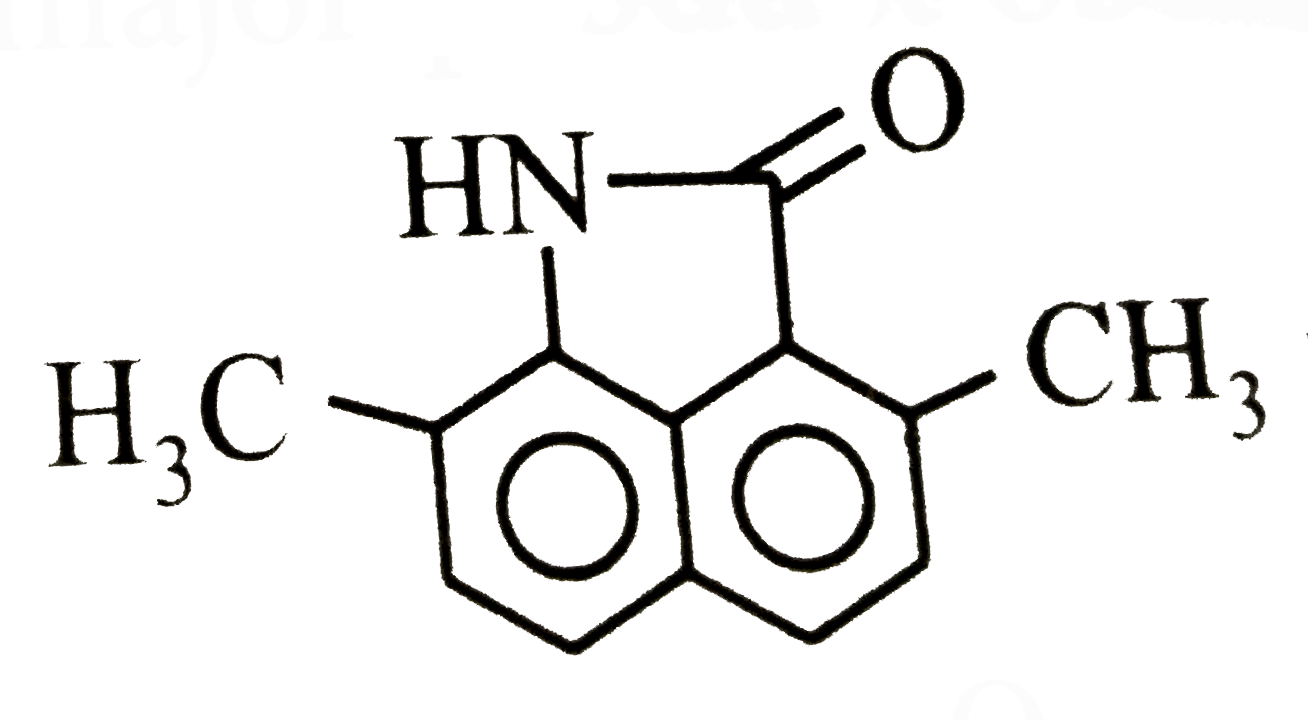When BrO−3 iron reacts with Br− in acid medium, Br2 is liberated. The equivalent mass of Br2 in this reaction is :
To find the equivalent mass of Br2 when BrO−3 reacts with Br− in an acidic medium, we can follow these steps:
Step 1: Write the balanced chemical equation
The reaction can be represented as follows:
BrO−3+Br−+H+→Br2+H2O
Step 2: Balance the reaction
To balance the reaction, we need to account for the number of atoms on both sides. The balanced equation is:
BrO−3+5Br−+6H+→3Br2+3H2O
Step 3: Determine the change in oxidation state
In BrO−3, the oxidation state of bromine (Br) is +5. In Br2, the oxidation state of bromine is 0. Thus, the change in oxidation state for bromine is:
+5→0
This means that each bromine atom in BrO−3 is reduced by 5 electrons.
Step 4: Calculate the number of electrons transferred
Since one mole of BrO−3 produces three moles of Br2, we can determine the total number of electrons transferred:
- From BrO−3 to Br2, 5 electrons are transferred per mole of BrO−3.
- Therefore, for 1 mole of BrO−3, the total number of electrons transferred is 5.
Step 5: Determine the equivalent mass of Br2
The equivalent mass is calculated using the formula:
Equivalent mass=Molar massValency factor
- The molar mass of Br2 is 2×79.9g/mol=159.8g/mol.
- The valency factor (n-factor) is 5, as we determined from the change in oxidation state.
Thus, the equivalent mass of Br2 is:
Equivalent mass of Br2=159.8g/mol5=31.96g/equiv
Final Answer:
The equivalent mass of Br2 in this reaction is 31.96g/equiv.
---
The reaction can be represented as follows:
BrO−3+Br−+H+→Br2+H2O
To balance the reaction, we need to account for the number of atoms on both sides. The balanced equation is:
BrO−3+5Br−+6H+→3Br2+3H2O
In BrO−3, the oxidation state of bromine (Br) is +5. In Br2, the oxidation state of bromine is 0. Thus, the change in oxidation state for bromine is:
+5→0
This means that each bromine atom in BrO−3 is reduced by 5 electrons.
Since one mole of BrO−3 produces three moles of Br2, we can determine the total number of electrons transferred:
- From BrO−3 to Br2, 5 electrons are transferred per mole of BrO−3.
- Therefore, for 1 mole of BrO−3, the total number of electrons transferred is 5.
The equivalent mass is calculated using the formula:
Equivalent mass=Molar massValency factor
- The molar mass of Br2 is 2×79.9g/mol=159.8g/mol.
- The valency factor (n-factor) is 5, as we determined from the change in oxidation state.
Equivalent mass of Br2=159.8g/mol5=31.96g/equiv
The equivalent mass of Br2 in this reaction is 31.96g/equiv.
Similar Questions
Knowledge Check
The reaction of R−C−NH2 with a mixture of Br2 and KOH given R−NH2 as a product. The intermediate does not involve in this reaction :
A BR−N=C=OCR−NHBrD
BR−N=C=OCR−NHBrD
When BrO−3 ion reacts with Br− ion in acidic medium, Br2 is liberated. Calculate the ratio of molecular mass and equivalent mass of KBrO3
View SolutionPropyne reacts with Br2/HOH to produce
View SolutionBenzamide on treatment with Br2 and alkali gives
View SolutionWhen propanamide is reacted with Br2 and NaOH, the product formed is :
View SolutionBenzoic acid is treated with SOCl2 and the product (X) formed is reacted with ammonia to give (Y). (Y) on reaction with Br2 and KOH gives (Z). (Z) in the reaction is
View SolutionBr2 undergoes disproportionation reaction in basic medium to give Brɵ ion and BrOɵ3 (bromate) ion in reduction and oxidation reaction.
View SolutionThe mojor product obtained when Br2/Fe is treated with

View Solution
